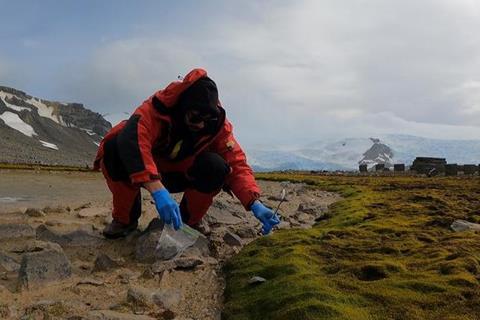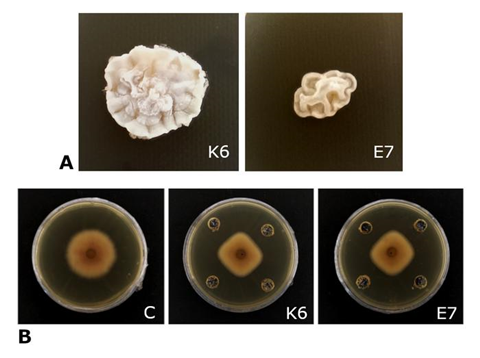A recent study conducted by scientists at ESPOL has unveiled the biotechnological potential of microorganisms from Antarctica. In this remote continent, where life thrives under extreme conditions, researchers isolated 77 microbial strains from 162 cultures, identifying 49 species, predominantly actinomycetes (66.23%).

Sampling conducted at the Great Wall and Henryk Arctowski stations revealed a rich diversity of microorganisms, especially in areas covered with mosses and lichens, where organic matter appears to support their proliferation.
READ MORE: The banana apocalypse is near, but biologists might have found a key to their survival
READ MORE: Scientists discover how fungi interact with soil actinomycetes
Bananas are among the most important crops worldwide, with Ecuador as the leading exporter, supplying 25% of the global market. However, the industry faces a severe threat: the fungus Fusarium oxysporum f. sp. cubense, particularly its Tropical Race 4 (TR4) strain. This pathogen targets the most widely cultivated Cavendish variety, damaging the plant’s vascular system and causing death. Even more concerning is that the fungus can remain in the soil for decades, making eradication difficult.
Despite Ecuador’s efforts to implement phytosanitary controls and monitoring, long-term solutions require an integrated approach combining genetic improvement of plants and comprehensive crop management.
Antarctic bacteria to the rescue
In the search for sustainable solutions, researchers evaluated the antifungal activity of 21 isolated actinomycete strains. The results were promising: 41.18% of these strains demonstrated the ability to inhibit the growth of Fusarium oxysporum.

Two strains stood out significantly: Streptomyces polyrhachis (K6) and Streptomyces fildesensis (E7), isolated from the Escudero and Great Wall stations. These strains exhibited potent antifungal activity, with IC50 values of 614.12 AU/mL and 280.83 AU/mL, respectively, suggesting their potential as biocontrol agents for managing Fusarium.
Bioactive compounds with antifungal potential
The study revealed that the culture broths of these strains contain compounds capable of completely inhibiting the growth of Fusarium oxysporum at high concentrations. Tests using the AlamarBlue reagent indicated a significant reduction in the fungus’s cell viability, particularly with bioproducts derived from strains K6 and E7. Moreover, these compounds are stable at room temperature and do not require special storage conditions, making them ideal for tropical environments.
Molecular identification through 16S rRNA gene sequencing showed that strain K6 has a 96.98% similarity to Streptomyces polyrhachis, while strain E7 exhibited a 99.4% similarity to Streptomyces fildesensis. The discovery of S. polyrhachis in Antarctica represents a groundbreaking finding in biotechnology.
Towards a sustainable future in pest control
The discovery of these microorganisms underscores the importance of exploring extreme environments in search of innovative biotechnological solutions. Antarctic actinomycetes could pave the way for sustainable disease management in the banana industry, reducing reliance on pesticides and promoting a more ecological approach.

As these investigations progress, a new hope emerges to mitigate the impact of diseases like fusarium wilt on banana production. Developing bioproducts derived from Antarctic microorganisms could revolutionize agricultural practices, benefiting producers and the environment.







No comments yet